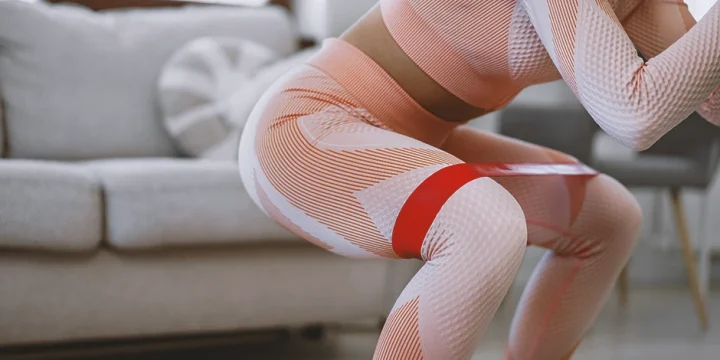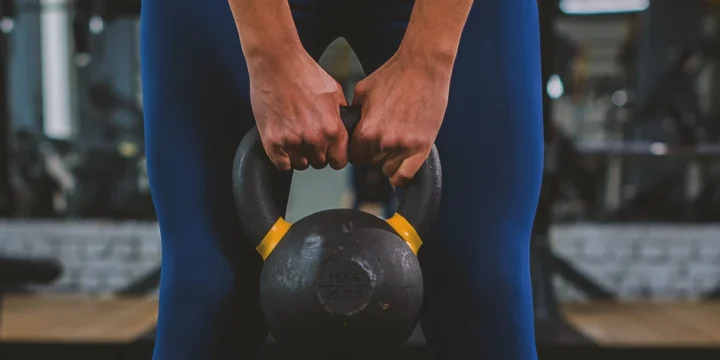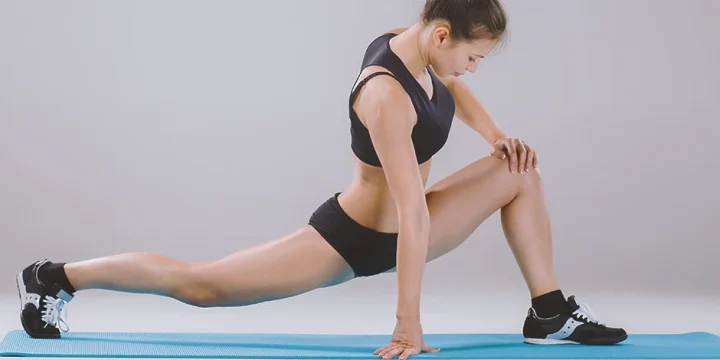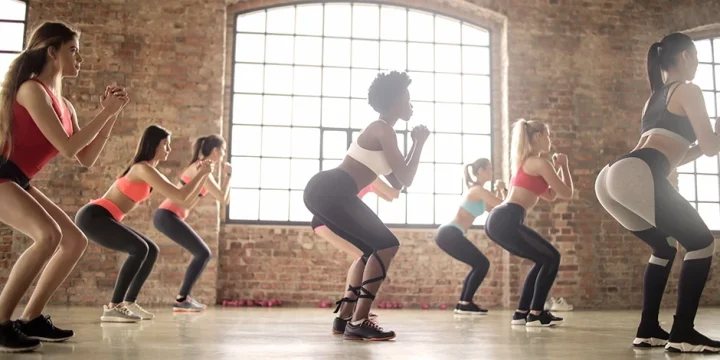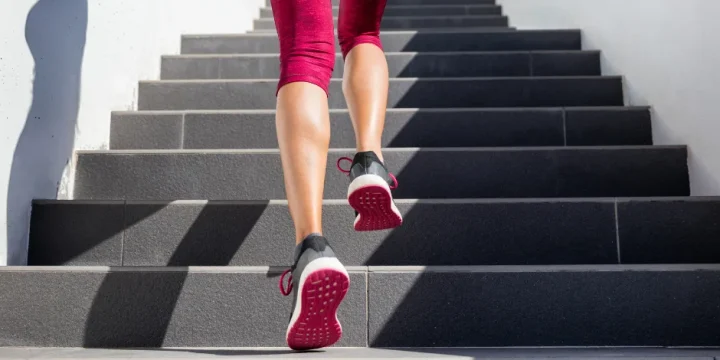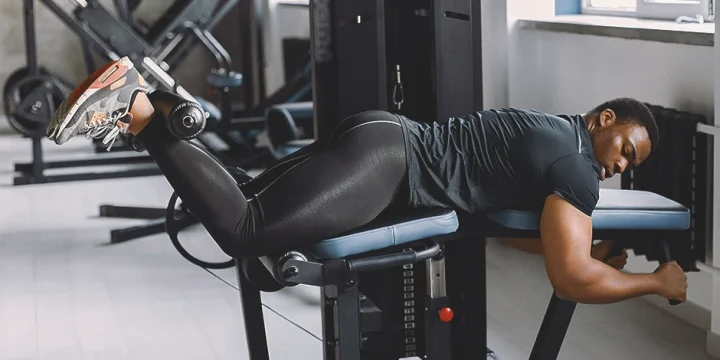Compound workouts like front and back squats are excellent ways for any level of weightlifter to increase muscular development and strength.
However, if you are unable to squat owing to injury concerns (lower back problems or knee pain), lack suitable gym equipment (like a squat rack), or want to add variation to your training, there are many leg exercises you can perform.
As a certified fitness trainer with over 9+ years of experience, I will provide the best leg workouts and tips for building big legs without squatting.
Let's dive in.
Quick Summary
- Lifters can build leg strength and size without squats using unilateral lower-body workouts and machine-based lifts.
- Using compound movements as the basis of your training regimen can help develop movement quality and leg gains.
- The Scandinavian Journal of Medicine & Science in Sports reports that performing leg exercises with a full range of motion with every rep maximizes muscle gains.
- Integrating ankle weights (like kettlebells or ankle straps) into leg workouts can significantly amplify their intensity.
No Squat Leg Workout for Building Bigger Legs

While squats are the king of all exercises, you don't need them to build your legs.
Here are five highly effective exercises to build your legs.
1. Leg Extension
I've found that single-joint leg workouts can be an excellent technique to increase leg growth without causing excessive systemic fatigue.
Including leg extensions in a workout regimen may boost hypertrophy by performing higher rep sets with shorter rest periods.
"There's no denying that leg extensions assist in tightening your quads. After all, there aren't many workouts that replicate the solitary squeeze and quads-burn that they're famous for."
- Gareth Sapstead, NSCA Certified Strength & Conditioning Specialist
Here's how you perform leg extensions with good form:
- Set the leg extension machine with your knees bent at 90 degrees and the pad on top of your shins near your ankles. Ensure the seat is adjusted to your specifications. Grip the handles on the seat's sides.
- Extend your legs, keeping your core engaged until the cushioned roller rises and your legs are straight.
- Pause after squeezing your quadriceps.
- Bend your legs slowly, resisting the load as you drop them until the plates touch.
- Repeat for reps.
2. Leg Press
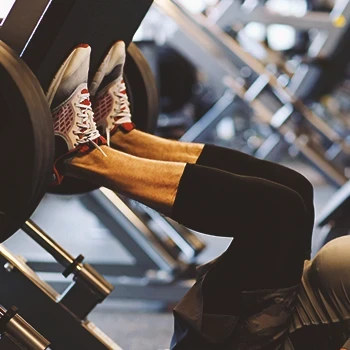
In my experience, the leg press is a safe and excellent machine variation for building bigger legs without doing squats.
Here's how to perform them with good technique:
- Sit on a leg press machine and put your legs on the platform before you. Your legs should be spaced around a foot to approximately two feet apart.
- Remove the safety bars that are keeping the platform in position. Without locking your knees, push the platform up until your legs are completely stretched. This is your starting point.
- Slowly drop the platform as you inhale until the upper and lower legs create a 90-degree angle.
- Return to the beginning position by pushing with your heels and using your quads. Exhale while doing so.
- Repeat for the desired number of reps.
3. Dumbbell Lunge
Dumbbell lunges are a powerhouse in any leg workout, especially when squats are off the table. As a fitness trainer, I've seen how they effectively target the entire lower body, offering a dynamic challenge that boosts both strength and stability.
Here’s how you do them with good form:
- Begin with your feet hip-width apart, holding a dumbbell in each hand by your sides.
- Step forward with one leg, lowering your hips until both knees are bent at about a 90-degree angle. Make sure your front knee is directly above your ankle and your other knee doesn't touch the floor.
- Keep the weight in your heels as you push back up to the starting position.
- Repeat the movement, alternating legs for each rep.
4. Dumbbell Swing
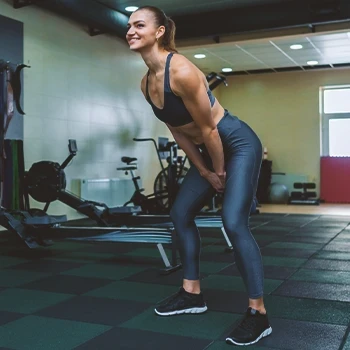
From incorporating dumbbell swings into my own workouts, I've learned they're a dynamic hip hinge activity that really engages the lower body.
Instead of squatting as the dumbbell swings between my legs, I focus on hinging my hips backward. It's the powerful contraction of the glutes and the snap of the hips that truly drive the dumbbell upward and forward in an arc, a technique I've refined over time for maximum efficiency.
Here's how to perform a dumbbell swing:
- Hold a dumbbell in the center with one hand in front of the other. Make sure your feet are shoulder-width apart.
- Push your hips back and swing the load between your legs without curving your lower back and with your knees slightly bent.
- When you have the weight behind you, engage your glutes and propel your hips forward to swing the weight to your chest level.
- At the apex of the exercise, compress your quads, core, and glutes as firmly as you can. Assume you're in the vertical plank posture.
- Then, swing the weight back between the feet and repeat.
5. Romanian Deadlift
From my earliest days of lifting, I've consistently relied on the Romanian deadlift (RDL) as a top-tier exercise for targeting the glutes and hamstrings. It's been instrumental in my journey towards gaining muscle mass and sculpting beefy hamstrings.
“The Romanian deadlift is beneficial for back leg strength. Consider the weighted lunges: you wouldn't perform it with 400 pounds, but you could execute a Romanian deadlift using that weight.”
- David Kingsbury, Founder & Head Trainer at Opus Fitness
How you do RDLs:
- Hold the load (barbell or dumbbells) in front of the thighs and drop to the ground by pulling your hips back.
- With a slight knee flexion, lower the weight, keeping your shoulder blades pushed together and the chest open and broad.
- Return to the starting position by thrusting your hips forward when the load is below your knees.
- Repeat for reps.
Sample Squat-free Leg Workout Program

Follow the following leg routine to build muscles without needing to squat.
After the workout, conduct full-body static stretching for 1 to 2 minutes for every body part, with special time devoted to troublesome regions such as the upper back and tight hips.
If possible, have a quality low-calorie protein shake containing simple carbohydrates at this time, if not shortly after that, to promote healthy muscle recovery.
Here's a simple squat-free leg day using the exercises we covered:
- Leg presses: 3 sets x 8–10 reps
- Dumbbell lunges: 2 sets x 8–10 reps
- RDLs: 3 sets x 6–8 reps
- Dumbbell swings: 2 sets x 15–20 reps
- Leg extensions: 2 sets x 20–30 reps
Tips for Building Big Legs Without Squats

Below are ways to enhance leg growth without performing squats in a leg exercise routine.
1. Embrace Full Range of Motion
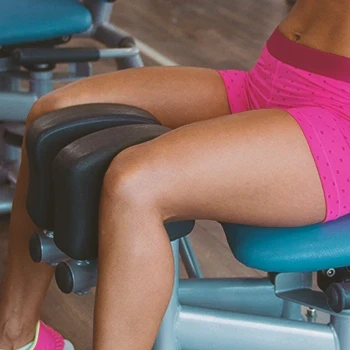
I've seen many beginners trying to go heavy on leg lifts when they should be focusing on their range of motion.
Research from the Scandinavian Journal of Medicine & Science in Sports found that full ROM resistance training produced better muscle hypertrophy effects than partial ROM [1].
By exercising through the whole range of motion, you avoid using as much weight as you would if you were doing partial repetitions, which may help you avoid undue structural stress on connective tissue and the knee joint.
2. Work Through a Variety of Rep Ranges
Because you're not doing the basic squat movement, you'll want to make sure you're taxing your body as much as possible by going through many rep ranges.
When most individuals squat, they either perform extremely low reps with heavy weight to maximize strength or ratchet up the rep range, reducing the weight and ensuring growth while invoking metabolic benefits [2].
Use the same method for your other complex lifts.
Pick one compound exercise to go heavy and one to concentrate on higher rep ranges.
This will require you to work throughout all reps and metabolic spectrums, resulting in outstanding results.
3. Alter Your Leg Position
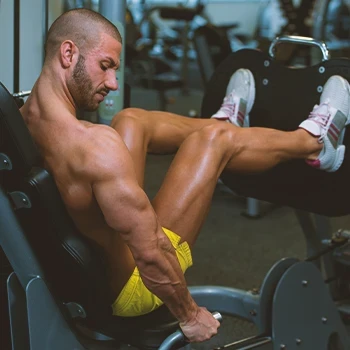
I've found that altering your leg position on certain lifts is another wonderful way to build muscular legs without squats.
Take, for example, the leg press.
Leg press may be performed with various foot placements that target the quadriceps at slightly varying angles.
Turn the feet out to engage the inner thighs more directly.
Turn them in, and you'll feel the fire in the quadriceps sweep.
Use a broader leg position higher on the platform to engage your glutes.
You may also get tremendous outer quad stimulation by bringing your feet together.
While you should not complete all these in a single session, employing these alternatives weekly will ensure thorough leg work.
4. Stick to Compound Lifts
Can't squat? No sweat! You can still rock other compound lifts.
These exercises work multiple joints and muscle groups simultaneously, letting you lift heavier and boost muscle growth and strength [3].
Romanian deadlifts, lunges, and dumbbell swings, for example, work more than one leg muscle group.
Incorporating them into your routine gives you more bang for your buck on leg day.
5. Incorporate Ankle Weights for Added Resistance
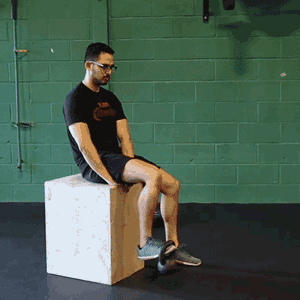
In my experience as a fitness trainer, integrating ankle weights (like kettlebells or ankle straps) into leg workouts can significantly amplify their intensity.
This simple addition is especially useful in exercises like leg extensions, lunges, and even walking.
Ankle weights add a level of resistance that challenges your muscles more, leading to increased strength and toning. They're particularly beneficial for those who may not have access to heavy gym equipment but still want to intensify their workouts.
6. Bands for Added Resistance
Resistance bands have been a game-changer in my leg training routines, offering a dynamic way to target different muscle groups.
These bands are not just versatile but also highly effective in providing a full range of motion and constant tension on the muscles.
Exercises like lateral band walks and banded leg presses engage the leg muscles differently than free weights, often activating smaller stabilizer muscles for a more comprehensive workout [4].
The practicality of resistance bands makes them ideal for home workouts, travel fitness routines, or as an addition to gym sessions, catering to all fitness levels and goals.
FAQs
How Can I Train My Legs if I Can't Squat?
If you can't squat, you can train your legs by performing workouts such as step-ups, glute bridges, kettlebell swings, and rear lunges.
Can You Build Legs Without Squatting?
Yes, you can build legs without squatting. You may reach your goal of having enormous legs using various exercises other than squatting.
How Can I Slim My Thighs Without Squats?
You can slim your thighs without squats by performing deadlifts, side leg raises, bridges, good mornings, and wall sits.
References:
- https://onlinelibrary.wiley.com/doi/full/10.1111/sms.14006
- https://www.ncbi.nlm.nih.gov/pmc/articles/PMC7927075/
- https://www.ncbi.nlm.nih.gov/pmc/articles/PMC4592763/
- https://www.sciencedirect.com/science/article/abs/pii/S0268003316301462
About The Author
You May Also Like
